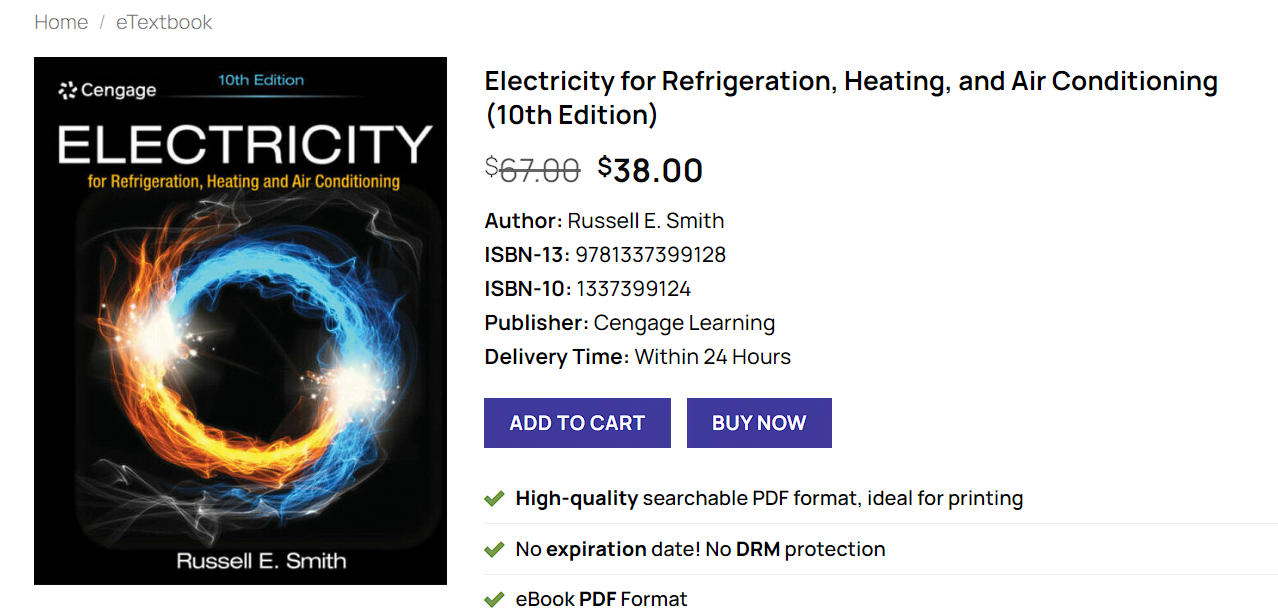Electricity for Refrigeration, Heating, and Air Conditioning 10th Edition a pivotal role in the functioning of refrigeration, heating, and air conditioning (HVAC) systems. Understanding the core principles of electricity is essential for anyone involved in the HVAC industry. The basic concepts of electricity, such as voltage, current, resistance, and power, form the foundation of all electrical systems, including those used in HVAC applications.
Voltage, often referred to as electrical potential difference, is the force that drives electric current through a conductor. Current, measured in amperes, is the flow of electric charge, while resistance, measured in ohms, opposes this flow. Power, measured in watts, is the rate at which electrical energy is consumed or converted into another form of energy. These elements interact within HVAC systems to control various components such as compressors, fans, and thermostats, enabling them to perform their functions efficiently.
The 10th edition of “Electricity for Refrigeration, Heating, and Air Conditioning” introduces several advancements that reflect the latest trends and technologies in the industry. One notable update is the inclusion of revised electrical codes, ensuring that readers are well-versed with the current standards and safety practices. Additionally, the textbook provides insights into the latest technological innovations, such as smart thermostats and energy-efficient compressors, which are becoming increasingly prevalent in modern HVAC systems.
By delving into these updated concepts and technologies, the textbook aims to build a robust foundational understanding for its readers. Complex electrical concepts are broken down into easily understandable segments, making it easier for students and professionals alike to grasp the intricacies of electricity in HVAC systems. With a solid grounding in these principles, readers can better troubleshoot, maintain, and optimize HVAC systems, ensuring their efficient and safe operation.
Key Concepts and Principles in the 10th Edition
The 10th edition of “Electricity for Refrigeration, Heating, and Air Conditioning” extensively covers critical concepts and principles essential for HVAC professionals. One of the foremost areas of focus is electrical safety procedures. Understanding the significance of safety measures is paramount in preventing accidents and ensuring a secure working environment. The textbook elucidates the protocols for safe handling and operation of electrical systems, thereby fostering a culture of safety among technicians.
Another integral aspect discussed is the role of various electrical components like capacitors, relays, and contactors. These components are essential for the operation and control of HVAC systems. Capacitors, for instance, are crucial for starting and running motors, while relays and contactors serve as switches that control the flow of electricity. The 10th edition provides a detailed analysis of these components, illustrating their functions and how they interact within the system.
Troubleshooting electrical issues is another key area covered in the textbook. Recognizing and diagnosing electrical problems swiftly and accurately is vital for maintaining HVAC systems’ efficiency and reliability. The book offers comprehensive guidelines and methodologies for identifying and resolving common electrical faults, enhancing the technician’s problem-solving capabilities.
Understanding electrical diagrams and schematics is also emphasized in this edition. These diagrams are indispensable tools for HVAC professionals, aiding in the visualization and comprehension of complex electrical circuits. The textbook aids in developing the skills necessary to interpret these diagrams, making it easier to navigate and troubleshoot electrical systems.
Finally, the practical applications of Electricity for Refrigeration, Heating, and Air Conditioning 10th Edition these concepts in real-world scenarios are highlighted. By integrating theoretical knowledge with practical exercises, the edition bridges the gap between learning and application. This approach not only solidifies the technician’s understanding but also enhances their efficiency and expertise in the field. Overall, the 10th edition stands as a comprehensive resource, equipping HVAC professionals with the knowledge and skills required to excel in their roles.

